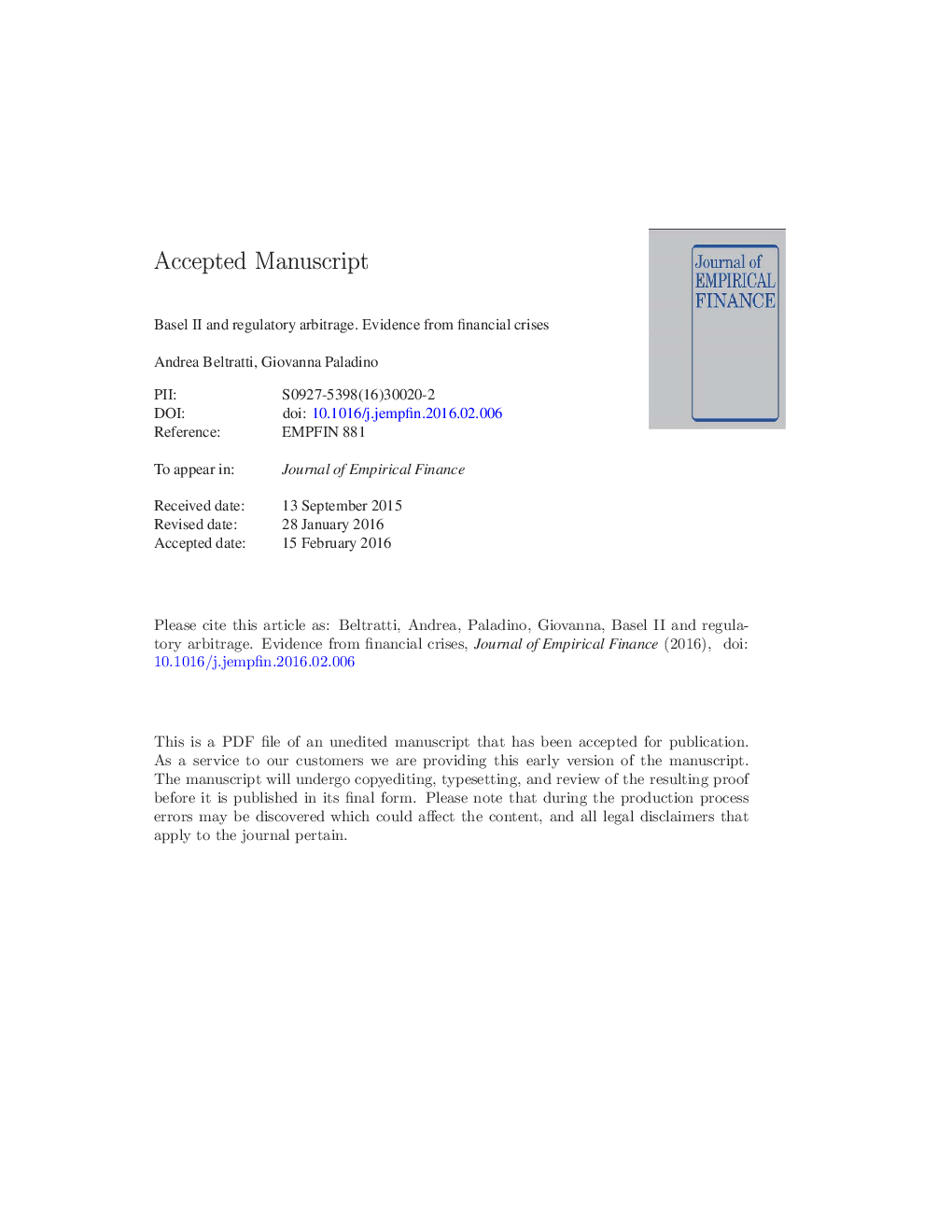| Article ID | Journal | Published Year | Pages | File Type |
|---|---|---|---|---|
| 5100358 | Journal of Empirical Finance | 2016 | 39 Pages |
Abstract
Banks use internal models to optimize risk weights and better account for the specific risk of each asset. As the choice of risk weights affects the regulatory capital ratio, economic theory suggests that banks with a higher cost of equity should be more aggressive in reducing risk weights. We consider a large panel of international banks and find that, after controlling for a number of bank and country characteristics and contrary to what happens for a non-Basel II bank, for a Basel II bank a higher cost of equity is not associated with a higher ratio between risk-weighted assets and total assets. These results are obtained in the context of state-of-the-art endogeneity-robust econometric procedures and across several specifications. We propose an indicator of risk weights saving and assess its impact on several performance measure during the 2008-2009 and the 2010-2012 crises. We find that for European banks not located in peripheral countries, a higher degree of RWA-saving is associated with more equity raising during the European crisis, more volatility, and lower distance-to-default. European banks located in peripheral countries engaged less strongly in RWA-saving than European banks located in core countries, and its impact on the various performance measures is almost non-existent, except for a decrease in the distance-to-default.
Keywords
Related Topics
Social Sciences and Humanities
Economics, Econometrics and Finance
Economics and Econometrics
Authors
Andrea Beltratti, Giovanna Paladino,
